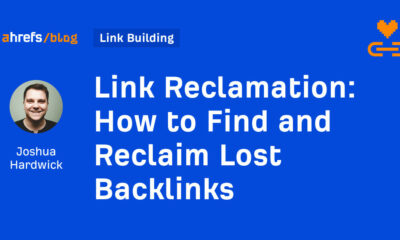When was the last time you talked to your customers?
I’m talking about real conversations with customers, where you actually listen — not just slapping a chatbot on your website with some predefined responses, or sending out an NPS survey via email.
If you’re like most companies, it probably wasn’t recently enough. That’s because talking to customers has become a lost art.
Marketers forget that marketing is about people. We hide behind our demographics, psychographics, segmentation analysis, and other tactics to distance ourselves from the very people we aim to serve.
It’s time to surrender the tactics, forgo our excuses, and begin authentic conversations with customers so that we can serve them better, create meaningful connections, and drive tangible business results.
Your customers are waiting
Since no one is talking to their customers as often as they should be, your customers are waiting to hear from you. They want your help, and they want to be helpful to you.
Is that surprising? It shouldn’t be. People love to share their opinions and give feedback; all it takes is asking them for it.
Including users in creating your marketing is the fastest way to guarantee success. Whether you’re launching a campaign or optimizing the performance of an existing experience, make your customers a part of the process.
Not only will it increase your clarity and improve your performance, but it also increases customer loyalty and makes your customers feel like a VIP who gets to see behind the scenes.
The soft side of marketing: look at the big picture
As marketers, we love to measure tangible, quantitative metrics. It’s why we love our KPIs and dashboards so much. But real insights come from understanding, and quantitative measures don’t often answer the question of “why.”
Disciplined marketers should always be asking “why?” but experienced marketers are the ones who have the tools to answer the question.
Analytics tools like Google Analytics, heatmaps, eye-tracking, and NPS surveys are insufficient. They often raise more questions than they answer and fail to deliver fundamental insights.
It’s not that these tools aren’t useful — they’re essential. But they’re only half of the insights equation. Talking to your customers and using qualitative analysis is the missing link to transform analytics into actionable insights.
Measuring the intangible
As data privacy becomes more prevalent and important, marketing attribution becomes more complex and ambiguous. Instead of investing in expensive and complex solutions, start by going to the only source that matters — your customers.
This six-word question and its variations are perhaps the most powerful, yet often underutilized, in all of marketing: “How did you hear about us?”
The answers to this question provide tremendous insight into the customer journey and their perception of the discovery process. And it’s another source of truth that can be used to validate or influence your marketing investments.
Despite the simplicity and ease of effort required, few companies ask customers this powerful question. Yet asking it can lead to some profound observations and insights.
Reading your customer’s mind
If you want the power to read your customer’s mind, usability testing is the simplest and most effective way. And — no surprise — it requires talking to your customers.
Usability testing involves recruiting a handful of users and giving them a series of tasks to complete. They are observed as they navigate the experience and “think out loud” to explain their thought process and the rationale behind their actions.
The usability testing process is fairly straightforward, extremely inexpensive, and yields ground-breaking insights in record time. It’s an ideal way to talk to customers and learn how to improve perception and performance.
It doesn’t require many users, either. Often interviewing fewer than ten users is sufficient to gain an abundance of valuable insights that can be prioritized and addressed. And then you can repeat the process, ideally at least every quarter.
Get the daily newsletter digital marketers rely on.
Fueling insights with technology
Gathering insights at scale is a challenge that grows with the size of the company and the number of customers. Fortunately, technology advancements have given us tools to engage and capture insights in large quantities with relative ease.
Tools like UsabilityHub and dscout are great examples of usability testing and customer research tools that leverage a massive audience of eager participants who can provide valuable insights. In addition, these platforms, and others, allow you to BYOA (bring your own audience) by inviting customers of your choice to participate.
Extracting and surfacing insights is another challenge that technology, particularly artificial intelligence, can help marketers solve. GoBright.ai is another research platform that uses AI-powered virtual assistants who engage with customers conversationally. Artificial intelligence allows for natural language processing which can be used to enrich customer data and identify trends among the insights captured.
Although the landscape of tools is constantly evolving, as is the technology itself, marketers must embrace both to communicate with customers effectively and at scale.
The customer isn’t always right
Henry Ford allegedly said that if he had asked customers what they wanted, they would’ve asked for a faster horse.
When you talk and listen to customers, you will certainly hear lots of crazy things. The marketing idiom that “the customer is always right” isn’t true. But don’t let that deter you from talking—and listening—to them.
The more you engage your customers, and the more you make them a part of the marketing process, the more successful your marketing will be.
It’s undeniable that your customers are talking. The only question that really matters is: are they talking to you?
Opinions expressed in this article are those of the guest author and not necessarily MarTech. Staff authors are listed here.





















You must be logged in to post a comment Login